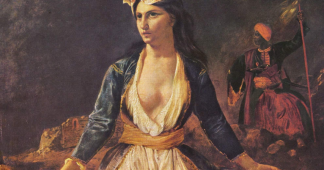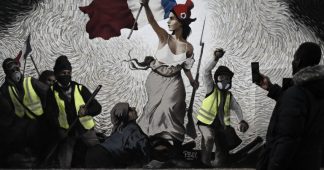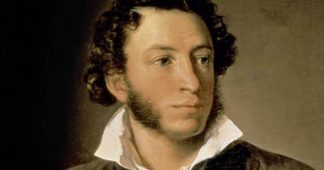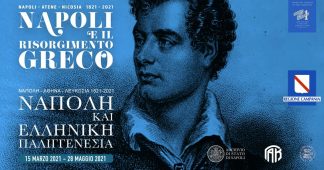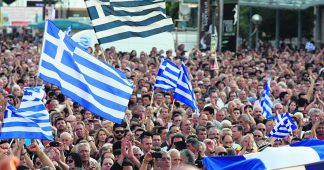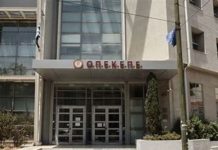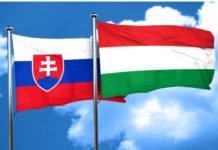by Paulina Karavasili
Apr. 15, 2021
The events of the 1821 Greek Revolution influenced many societal movements around Europe, but also inspired a large wave of Neoclassism art across the world.
Many foreign painters, poets and musicians, saw high ideals in the struggle of Greece and wanted to capture on canvas the heroism and self-denial of the Greek revolutionary warriors.
Today, thanks to many of these artists, we have an ‘image’ of what many famous Greek figures of the 1821 Revolution looked like. The contribution of European painters not only helped us to get to see the faces of the people who wrote modern Greek history, but also through their art, they helped raise public awareness in many European capitals, about the events that were happening in Greece.
From Lord Byron to Delacroix, many well-known figures of the time inspired, motivated and shocked Europeans with their work on the 1821 Revolution, as many protests around Europe started pressuring local governments to intervene and restore the national sovereignty of Greece.
The Massacre at Chios – Eugène Delacroix
One of the most famous and most depictive paintings of the cruelty of the Ottoman rule is ‘The Massacre at Chios (Scène des Massacres de Scio)’, a major oil painting by French artist Eugène Delacroix. The painting is more than four metres tall and brutally describes the horror of the wartime destruction that occurred on the Aegean island of Chios by the Ottomans. It was completed in 1824 and was bought by the French government for 6,000 francs, as the French public requested the intervention of their authorities in the war. Today, the painting is displayed in the Louvre Museum in Paris and is admired by millions of visitors and art lovers every year.

Greece on the Ruins of Missolonghi – Eugène Delacroix
‘Greece on the Ruins of Missolonghi’ (La Grèce sur les Ruines de Missolonghi) was the second painting about the Greek Revolution by Eugène Delacroix, and it created an even bigger uproar in the French capital. In the painting, Greece is symbolized through the figure of a woman who is wearing the traditional Greek costume. She is facing the viewer with her hands in a state of despair, as she is walking on top of the ruins of the city of Messolonghi. It is worth mentioning that the tragic development of the siege of the city by the Turks, in combination with the death of Lord Byron in the same city two years before the creation of the painting, greatly awakened Greece’s allies, who started preparing for a united battle against Turkey.

Episode of the Siege of Missolonghi – François-Émile de Lansac
Another famous French painter, François-Émile de Lansac, who was a student of Eugène Delacroix, captured in the ‘Episode of the Siege of Missolonghi’ the tragic last moments of the Greek-Ottoman battle at the city of Missolonghi. In the painting, a Greek mother is seen sacrificing herself and her child so that she will not fall into the hands and tortures of the Turks. As many Europeans started hearing about the atrocities in Missolonghi through the works of artists, the city became a symbol of the 1821 Revolution.

Portraits of Greek Heroes – Karl Krazeisen
Karl Krazeisen was a German army officer, illustrator and philhellene, who fought as a volunteer during the 1821 Greek Revolution and took part in the siege of Athens and the siege of the Acropolis. He painted a total of 19 portraits of great figures of the war, such as Theodoros Kolokotronis, Georgios Karaiskakis and others, just with pencil and paper. Thanks to his work, we know today what many of the Greek Revolution warriors looked like.




The following art pieces are also some of the most famous paintings of the 1821 Revolution era:
The Naval Battle of Navarino – Louis Ambroise Garneray (1827, Paris)

Death of Markos Botsaris – Ludovico Lipparini (1841, Treviso)

Alexander Ypsilantis crosses the Pruth – Peter von Hess (1827, Benaki Museum, Athens)

The “Hidden School” – Nikolaos Gyzis (1885-86, Private Collection)

The Souliote Women (Les Femmes Souliotes) – Ary Scheffer (1827, Louvre Museum, Paris)

The Last Communion of the Messolonghi People – Louis Joseph Toussaint Rossignon (unknown date, New York)

Greek Independence Day, March 25
Published at greekcitytimes.com
